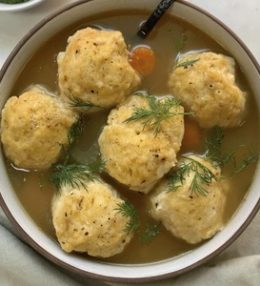Potatoes are a staple in almost every home kitchen, and it’s easy to see why: The root vegetable works well in a wide range of recipes, from crispy breakfast hash to cozy winter stews. They are delightfully easy to work with, as long as you use the right type of potato for the job. Different potato types have different levels of starch and moisture, ultimately dictating how each should be cooked.
Chefs tend to categorize potatoes based on preferred cooking method, says RJ Harvey, RDN, CEC, director of culinary at Potatoes USA. But for the general population, potatoes are usually split into three types: starchy, waxy, and all-purpose. Here’s a breakdown of each type of potato, along with tips for cooking them.
Starchy Potatoes
As the name suggests, starchy potatoes are high in starch and low in moisture, says Amy Eubanks, chef and senior team leader of global culinary development at Whole Foods. Their flavor is neutral and mild, while their texture is fluffy and smooth, says Kenneth Bower, director of produce merchandising at Baldor Specialty Foods.
Types of Starchy Potatoes
The classic russet is a common starchy potato, along with Idaho potatoes (i.e., russets grown in Idaho), and most sweet potatoes.
Cooking Tips
Due to the high starch content, starchy potatoes break down easily during cooking, explains Eubanks. This makes them ideal for making mashed or baked potatoes, as well French fries with a fluffy interior and crisp exterior.
In contrast, starchy potatoes aren’t best for dishes that showcase the vegetable’s texture and shape, such as gratins or potato salads, notes Eubanks. Likewise, they won’t fare well in soups, stews, or other dishes that use wet cooking methods, as they tend to fall apart when simmered in liquid, says Harvey.
With that in mind, the trick to successfully preparing starchy potatoes is to minimize the amount of water they absorb, says Harvey. One method is to swap boiling for steaming when preparing potatoes for mashing. You can also cut the tubers into larger chunks, which reduces water absorption, says Harvey. “While [bigger pieces take] longer to cook than a smaller dice, you’ll see that the result is mashed potatoes that are light, fluffy, and melt in your mouth,” he says. It’s also wise to avoid overworking starchy potatoes, which can result in a gluey mashed concoction.
Waxy Potatoes
Waxy potatoes have a slightly sweeter flavor than starchy potatoes, “and a firm, moist texture when cooked, making them ideal for dishes where you want potatoes to maintain their shape,” says Bower. This includes dishes like potato salads, gratins, and galettes, as well as cooking methods like boiling and grilling, he says.
Types of Waxy Potatoes
Examples of waxy potatoes include red potatoes, fingerlings, new potatoes, and baby potatoes.
Cooking Tips
As these varieties tend to hold their shape during cooking, they’re not recommended for mashed potatoes. For example, red potatoes typically make heavy and gluey mashed potatoes, but they’re fantastic in stews, braises, and soups, says Harvey. Meanwhile, fingerlings and baby potatoes can be added to stews and soups whole, or simply roasted for a delicious side dish. “These little potatoes are easy to prep, because they do not require any peeling and slicing,” adds Harvey.
All-Purpose Potatoes
“All-purpose potatoes strike a balance between starchy and waxy types. They have a moderate starch content, versatile texture, and thin, edible skin,” says Bower.
Types of All-Purpose Potatoes
Popular types of all-purpose potatoes include Yukon Gold, white potatoes, and purple potatoes.
Cooking Tips
All-purpose potatoes are often used by home cooks, as they can be boiled, mashed, roasted, fried, and baked, says Bower. Thus, the tubers are ideal candidates for a wide range of recipes, from creamy mashed potatoes to hearty winter soups.
Read More










